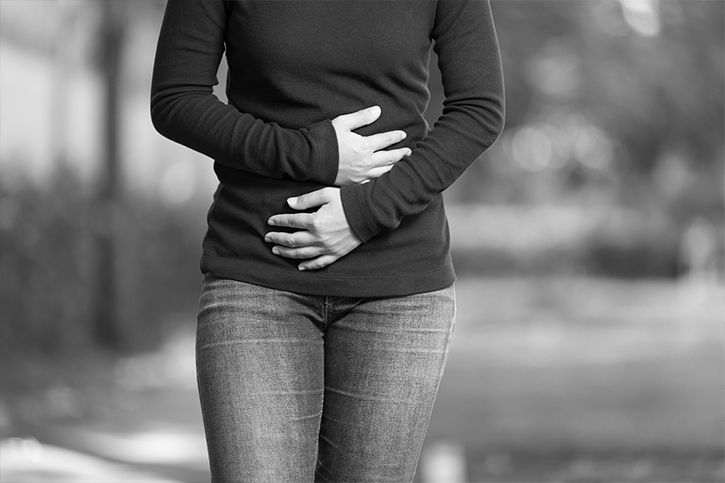Cysts, fibroids and polyps are all common gynaecological conditions, and you are probably aware of all three. However, it’s likely you don’t know how to differentiate between them. In many ways they are similar, so it’s understandable that many women confuse the three. To help clarify, let’s take a look the differences between them.
Many women confuse cysts, fibroids and polyps. And while they are similar, there are key differences between the three. Let’s take a look at what they are.
The Key Differences Between Cysts, Fibroids and Polyps
Polyps – Polyps are abnormal tissue growths that grow on the cervix (the neck of the womb) or in the endometrium (the lining of the uterus).
Ovarian cysts – Ovarian cysts are small, closed, fluid-filled sacs that grow in the ovaries.
Fibroids – Fibroids are benign non-cancerouss) tumours that grow within the uterine wall.
Now, let’s take a more in-depth look at each.
Polyps
A polyp is a small lump that growths either on the cervix or endometrium.
Cervical polyps grow from stalks rooted on the surface of the cervix or inside of the cervical canal and can usually can be seen outside the uterus at the tip of the cervix. They are usually benign and can be treated by removing them. An endometrial polyp grows in the endometrium and extend into the uterine cavity, therefore they are sometimes known as uterine polyps. They are caused by the overgrowth of cells in the endometrial tissue.
Usually only a small number of polyps occur at any one time, and can range in size from a few millimetres to a few centimetres and even bigger. While they are usually benign, they can become cancerous and should be removed to eliminate any risk.
Symptoms are usually mild, but they can be uncomfortable and affect day-to-day quality of life. These range from irregular or heavy menstrual bleeding to pain after intercourse. They can also cause infertility. Some polyps are very small and will not cause any symptoms.
Treating polyps simply involves removing them. There are some hormonal medications that can help treat the symptoms of polyps too, however, these only provide temporary relief. If your polyp has been found to contain cancerous cells, then your gynaecologist will discuss further options for treatment.
Read more about polyps here.

Fibroids
Fibroids are benign tumours that grow within the uterine wall – they are sometimes referred to as uterine fibroids, myomas, uterine fibromyomas, fibromas or leiomyomas.
They range in size, from very small (small than a pea) to quite large (up to 20 cm in diameter). There are three types of fibroids, which are categorised by their location on the uterus:
• Intramural: These are the most common type – growths in the wall of the uterus
• Submucosal: These are growths in the endometrium (the lining of the uterus)
• Subserosal: These are growths on the outside of the wall of the uterus (serosa), which can sometimes appear like long stalks.
• Pedunculated: These grow on a stalk either to the outside of the uterus, or inside the uterine cavity.
While smaller fibroids may not cause symptoms, those that are larger or that are growing on a particular part of the uterus can cause symptoms. These range from pelvic pain to heavy periods. They are also associated with infertility, miscarriage and premature labour, which is why they are often a cause for concern for women looking to have children.
Treatment involves removal of the tumour. Hormone medication and surgery are both used. The extent of the surgery and procedure will depend on the size of the tumour, as well as personal factors. For example, a hysterectomy – removal of part or all of the uterus – may be suitable for women with for very large or multiple fibroids that are causing major symptoms or complications who don’t wish to have children.
A newer treatment for fibroids, which is offered at Dr Brown’s Sydney Fibroid Clinic, is uterine artery embolisation. This is a minimally invasive procedure involving reducing the blood supply to fibroids to reduce their size, and reduce bleeding. It can offer a way to avoid surgery such as hysterectomy.
Read more about fibroids here.
Ovarian Cysts
Ovarian cysts are small fluid-filled sacs that grow in the ovaries. Polycystic ovary syndrome is where a large number of small cysts grow, causing an enlargement of the ovaries.
There are a range of different types. Follicular cysts and corpus luteum cysts are the most common, but there are also dermoid cysts, cystadenomas, endometriomas, and hemorrhagic cysts. Most cysts are benign, meaning they are non-cancerous, though they may be related to ovarian cancer.
Symptoms are similar to fibroids and polyps, ranging from pelvic pain to vaginal bleeding. A ruptured ovarian cyst can be very serious and may require immediate medical attention.
Most of the time ovarian cysts will go away on their own, but they will require close observation. If a cyst continues to grow, is causing severe symptoms, has ruptured, or is suspected of being cancerous, surgery may be recommended. If you have recurring ovarian cysts, oral contraceptives be prescribed to prevent the development of new cysts.
Read more about ovarian cysts here.
If you are suffering from any of the symptoms above, or have any questions about fibroids, ovarian cysts or polyps, please don’t hesitate to get in touch.
Dr Brown is one of the most trusted gynaecologists in Sydney and will be happy to offer advice and compassionate care in every way possible.
